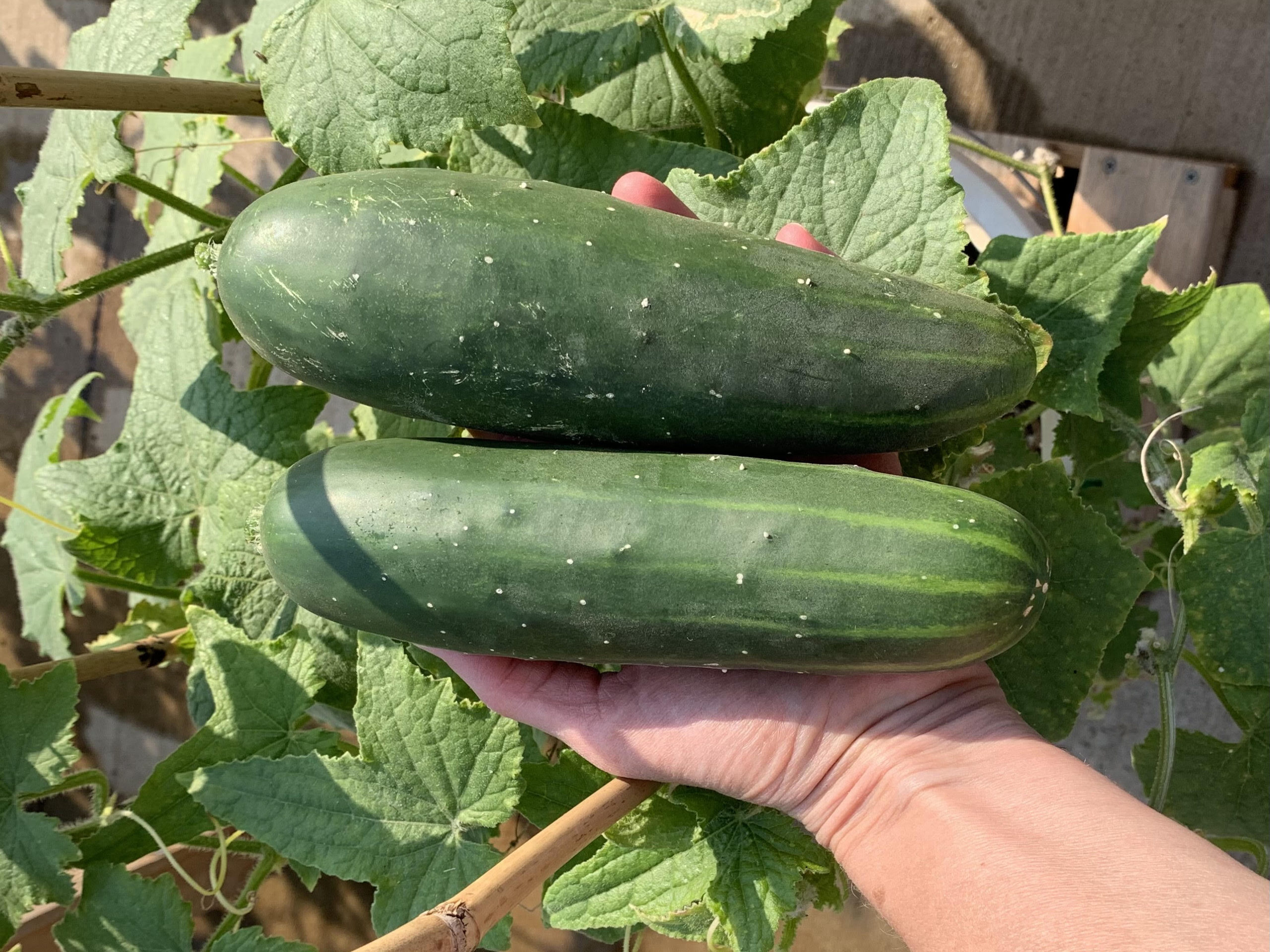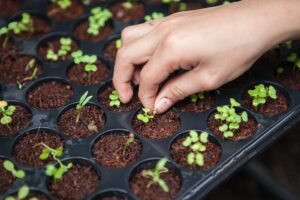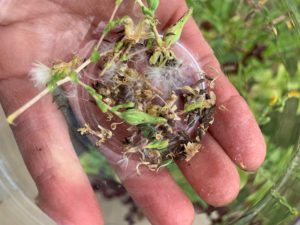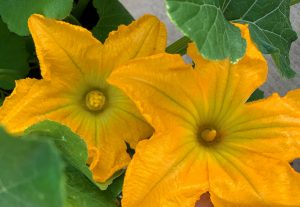Cucumbers are one of the most popular crops to grow for beginner and experienced gardeners alike! Not only are they easy to grow, but they also make a refreshing addition to a summer salad, not to mention crisp pickles or a tasty relish. It is not surprising, therefore, that growers want the satisfaction of saving cuke seeds from their garden. If that is you, this article will cover the process you need to follow. Please note that while it is still easy, it is not the same as saving other seeds, like okra, lettuce, or basil seeds. There are a few extra steps you will need to take.
The first step to harvesting seeds actually takes place during the planning stage when you are developing your garden layout. The reason being that in order to save pure or true seeds, you will need to isolate the variety of cucumber that you want to save from other varieties that you will also be growing. (Many suggest planting at least five plants of the one variety to maintain the integrity of the variety over time.) Isolation takes quite a bit of space, with some experts recommending separating varieties by a ¼ mile (.40 km) or more.
Isolation is necessary because cucumbers have male and female flowers that require pollination. If you grow more than one variety, there is the possibility, or more likely the probability, that the varieties will cross-pollinate. You can still save the seeds, but the next generation may not taste the same as the parent plants. Cross-pollination will not affect the taste or production of the current harvest, but it will affect the seeds for the next generation of cucumbers.
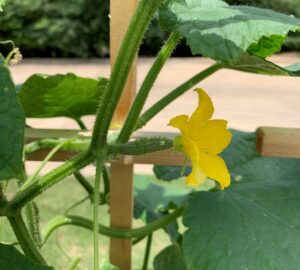
If isolating varieties by a ¼ mile (.40 km) or more is not practical, you can try growing one variety early in the season and another one later in the season to lessen the chances of cross-pollination. For some gardeners, it will be easier to just grow one variety of cucumber.
This article contains affiliate links. If you make a purchase using one of these links, I will receive a very small commission at no additional cost to you, and it will help me maintain this website. Rest assured, I only recommend products I actually like!
Hybrid vs Heirloom Cucumber Seeds
Another important point to remember is that you will need to select a non-hybrid variety, that is, an heirloom variety, to grow. (It will say heirloom or hybrid on the seed packet.) It is difficult to save hybrid seeds because hybrid plants are a cross between varieties. The seeds saved from a hybrid plant will not produce a true copy of the parent plants and may actually produce sterile seeds instead. So, choose an heirloom variety if you want to save seeds.
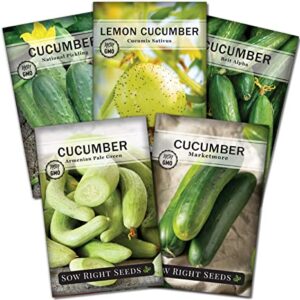
The Wet Method or Fermentation Method
Seeds from fleshy vegetables and fruits like cucumbers and tomatoes are best harvested using the wet method, also referred to as the fermentation method.
At or near the end of the season, choose a plant(s) from your garden that has produced the best-tasting cucumbers and is also disease-free since some diseases can be transmitted to the seeds. Allow a few cucumbers (or more) to remain on the vine until they are overripe. You will know they are past their prime because they will turn yellow to orange in color. Once this occurs, leave the cucumbers on the vine for a few more weeks as they soften. If the weather or other conditions prevent you from leaving the yellow orange cukes on the vine, harvest them and allow them to finish ripening out of direct sunlight on the kitchen counter.
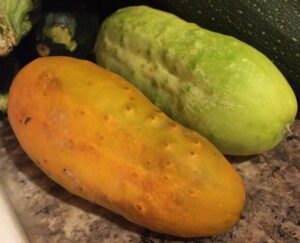
Cut the overripe cucumbers lengthwise and remove the seeds and pulp with a spoon. Place them in a small container and completely cover them with water. Do not put a lid on the container as the contents needs to breathe. If necessary, you can cover the jar with a paper towel or coffee filter secured with a rubber band so that it does not attract fruit flies.
Allow the seeds to sit in the container for three days, stirring each day. The fermentation process accomplishes a few things. It removes the gel coating from the seeds, kills viruses, and separates the viable (good) seeds from the inviable (bad) ones.
After three days, the inviable seeds and pulp will float to the top, while the good seeds will sink to the bottom. Add more water and stir and then carefully pour off the floating seeds, pulp, and any mold. Rinse the good seeds and spread them out on a paper towel, coffee filter, or fine mesh screen. Allow them to dry completely. The drying process could take several days to a few weeks. You will know they are completely dry when you can take a seed and snap it in half. If you fail to thoroughly dry out the seeds, they can mold in storage.
Once the seeds are completely dry, place them in an airtight envelope and note the variety and date. (Here are the bags and envelopes I use to store seeds in.) Store the envelope in a cool, dark place. Some gardeners like to store their seeds in the refrigerator, which is fine, but is not necessary. If stored properly, seeds will last about five years. (You can find out how long other seeds last by checking out this chart and article.)
Saving seeds is a fun and rewarding practice that ensures you have enough seeds for the future and even some to share with friends and family.
Thank you for reading this article! If you found it helpful, please consider sharing it with others via email and social media!
